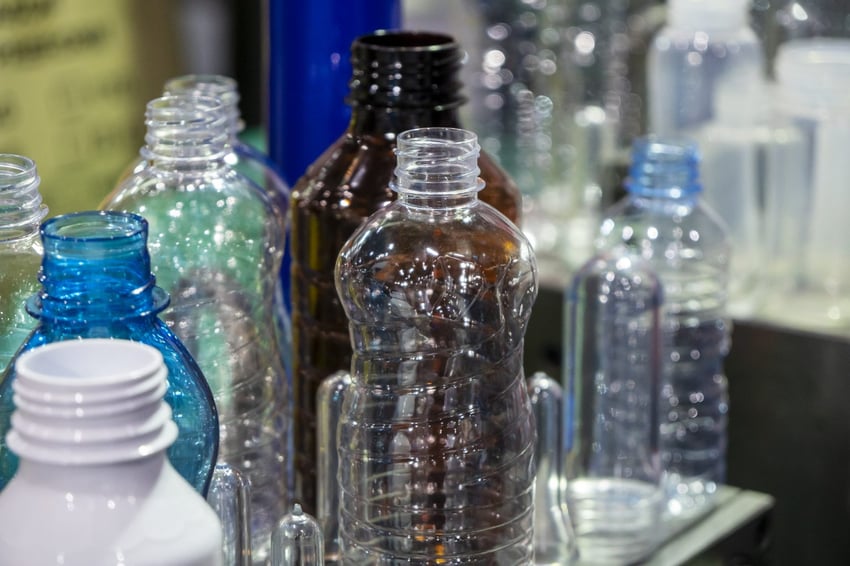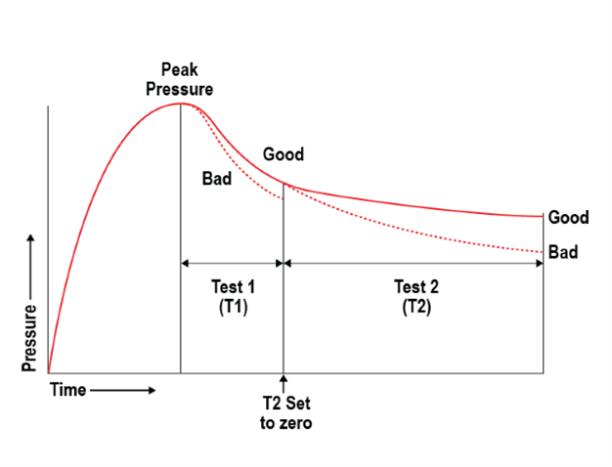While vacuum decay is a popular leak testing option, it is not ideal for empty bottles. Pressure decay is a great alternative to allow defects to be identified quickly, all while maintaining bottle integrity.

What Is Pressure Decay Leak Testing?
Testing empty containers for leaks and defects is the most effective way to ensure product quality. However, being able to identify such defects efficiently is essential for bottle manufacturers. A pressure decay leak test is an ideal way to identify defect in empty containers.
While vacuum decay testing is popular, it is not ideal for empty bottles. Vacuum decay can often cause empty bottles to collapse during the test.
Pressure decay testing with ALPS Inspection is a great alternative that allows defects to be quickly identified. All while maintaining bottle integrity throughout the test. In this blog, we will discuss what you need to know about detecting container leaks with pressure decay testing.
Pressure Decay Leak Test vs. Vacuum Decay
Are you testing filled containers or empty containers? If you are testing empty containers that are not required to have a vacuum seal, then a pressure decay leak test is the most efficient method. Pressure decay is also beneficial in applications where the lack of container stability allows the possibility of an empty container to collapse during testing.
If you’re testing a filled container or one that requires a vacuum seal, then a vacuum decay test may be your best solution. Vacuum decay testing is a non-destructive test that detects leaks in nonporous, rigid or flexible packages. This method ensures that packaging that contains items such as food or beverage are safe from possible container leakage after being filled and sealed.
The Benefits of Choosing on-Line Leak Testing
First and foremost, ALPS on-line leak testing ensures that products will not leak out of the container. And that oxygen, moisture, and other contaminants will not get in. In turn, this helps maintain product quality and integrity.
Not only that, but our leak detection system tests each bottle as part of the manufacturing process. This provides much better results compared to random sampling, which does not guarantee defect detection.
You also enjoy better monitoring of the blow molding process. Issues with leaks can be an early warning sign that one or more of your pieces of manufacturing equipment may be faulty or may require maintenance and servicing.
Together, these benefits help you protect your inventory and prevent costly returns of faulty products.
How Does a Pressure Decay Leak Test Work?
ALPS pressure decay leak test consists of 3 steps:
- Fill – The bottle is filled to the desired peak pressure, which is controlled by an electronic regulator.
- T1 – The percentage drop in pressure is measured a certain period of time. After it reaches its peak to measure its performance against a pre-set limit.
- T2 – The percentage drop from T1 pressure is measured against another pre-set limit, ensuring the stability of the bottle.
Not only does ALPS pressure decay testing measure peak pressure, but also changes in pressure over time. This could indicate a small leak that may not be caught with 1-step pressure decay testing.

The three steps of the pressure decay testing process.
“Rules of Thumb” For Pressure Decay Testing
There are a few things you need to keep in mind when pressure decay testing:
- Sensitivity increases as you increase test time. The longer you test a bottle, the more time the system has available to detect pressure drops.
- Hole size detection depends on the sensitivity of the unit. Other pressure decay testers can miss holes up to 1mm (larger than a paper clip). While ALPS units can detect much smaller holes.
- Some pressure drop is normal even in good bottles. As containers may stretch under pressure slightly while the air stabilizes after pressurization.
- It takes longer to detect leaks in large bottles and containers than smaller units, due to the increased volume of the product.
It is important to try to control temperature variations on the line as much as possible. This will help ensure proper consistency with pressure decay testing equipment.
Sensitivity – the ALPS Point of Difference
Engineered for precision, ALPS leak testers use test pressures as low as 20 millibars – up to 5 times less than other testers.
By using low pressure during the testing process means bottles are less likely to deform. This will allow for better test accuracy.
In turn, this enables our testers to be ideal for detecting seal surface defects. Seal surface defects are often found in blow molding and PET containers.
Contact Us Now to Learn More – And Get Started Right Away
If you are ready to invest in pressure decay testing technology from ALPS Inspection, do not wait. Contact us or give us a call at 1 (800) 325-8717 to learn more. See how you can implement this technology into your manufacturing line.
